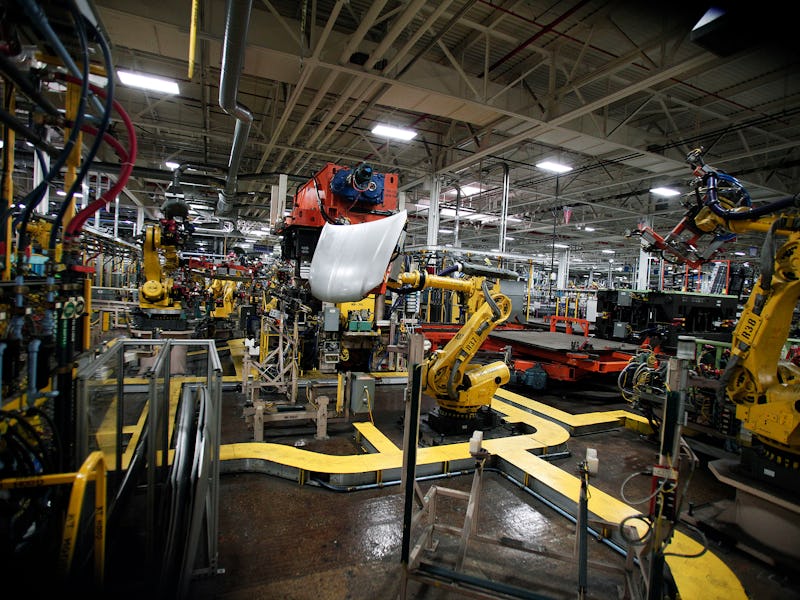
Empty factories in developed nations, which were once filled with humans making things, may once again be filled. But this time, these relics will be filled with robots making things.
On Tuesday, the United Nations released a fascinating policy briefing — “Robots and Industrialization in Developing Countries” — that analyzes the effects of automation. We’re used to hearing about robots taking jobs, the impending robopocalypse, and the end of work as we know it (basic income), but this study went further.
Automation is making these outsourcing companies reshore: They’re bringing the jobs back to their own countries, and taking advantage of the next cheap-labor frontier — robots.
An automated factory in North Korea, 1972.
The automotive, electrical, and electronics industries are automating the quickest. Traditionally, developed nations have outsourced these jobs to countries with cheap labor. These economies in those countries benefited from reliable jobs, and perhaps attained some stability. Now, though, there’s no need for automated factories to be elsewhere. These developing countries, then, will have to reinvent themselves if they wish to maintain economic stability. For instance, a recent, informal Inverse survey of Donald Trump supporters found they support factory robots — as long as those manufacturing ‘bots are in America.
The circular tale of manufacturing goes like this: First, jobs were outsourced to countries where people worked for less, until robots began taking those jobs (see: China). Then, manufacturers realized they could set up robots anywhere, so developed countries began buying robots. That left developing countries — those which had relied on those outsourced jobs — to reckon with the loss, and, in turn, join the robotic revolution or fall behind.
Unfortunately, the only real beneficiaries are the manufacturers themselves. The knee-jerk response to recouping outsourced jobs is, “Great!” But when those jobs are going to robots, there’s not much cause for celebration. Meanwhile, the developing nations, which relied on these jobs, are left to fend for themselves.
The UN recommends that, hand-in-hand with “supportive macroeconomic, industrial and social” policy shifts, developing countries “need to redesign education policies and embrace the digital revolution.” Countries that wish to maintain superiority can attempt to employ more robots than their counterparts, better prepare their citizens for more managerial, robot overseer roles, or focus on jobs that have yet to be fully automated. Garment-making, for instance, still relies on cheap labor, and robots are not adept at those skills — yet.
Developed nations, meanwhile, are growing their robot squad each year. China is the most aggressive: The UN expects that China will double its operational stock by the end of 2018, and, by the end of 2016, will “overtake Japan as the world’s biggest operator of industrial robots.” But all the other foremost countries — the Republic of Korea, Germany, the United States, among others — will likewise further propel this trend. The UN wants to strategize for the developing countries, which will inevitably be left behind in this new sort of gold rush. It cannot provide a panacea, but it hopes to mitigate the inevitable instabilities.
In an unrelated event on Tuesday, electric automaker Tesla announced it was planning to buy Germany’s Grohmann Engineering to further automate much of its car manufacturing process.